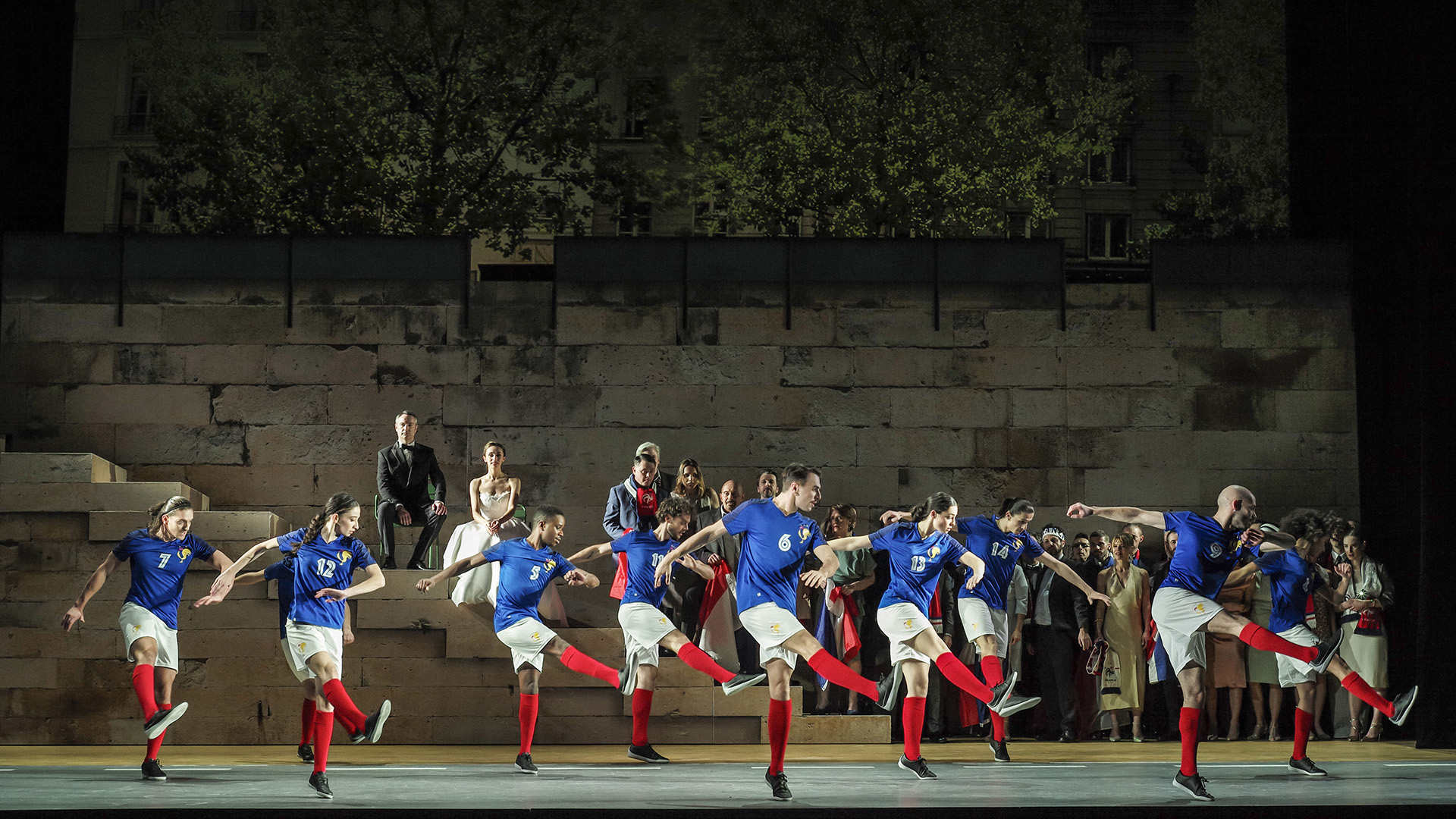
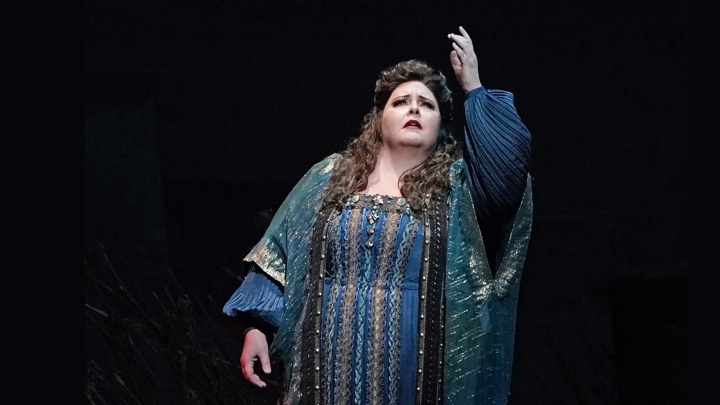
Personally, I am not sure how well Aïda conforms to regie type productions. The issues of imperialism, slavery, war crimes, women’s subjugation and racism can lend themselves to a more modern treatment. Verdi’s music plumbs emotional truths but the style of the music, the exoticism and the big set pieces lend themselves to historical spectacle, not intellectual drama.
The libretto is closer to baroque opera seria concentrating on the romantic conflicts of several flat, one-dimensional characters—only Amneris has some depth and variety. The rest are one-note. Certain operas are better left in their original settings and historical periods and I believe Aïda is one of those operas—you are welcome to disagree.
The Metropolitan Opera was to present a new Michael Mayer Aïda during one of the COVID-19 cancelled seasons that was a co-production with the Bolshoi Opera. World calamities got in the way of that show with Anna Netrebko, the original Aïda, dropping out of the picture for political humanitarian reasons along with the Bolshoi Theater. That ill-fated production is still on the books for a future season with Angel Blue cast as the Ethiopian princess turned slave.
The Fall run of Aïda was a sad affair with one vocally troubled veteran soprano giving way after opening night to a gifted, promising cover who was unable to control the hardest, highest pages of the role. The Radames was a young American with little sense of Verdian style or Italian phrasing despite a big, gleaming, healthy, unimaginatively used tenor voice. The remainder of the cast struggled along seemingly finding their own way. Anita Rachvelishvili sang one performance of Amneris in the later part of the run and withdrew from the remainder of her run due to lingering vocal problems.
Last month, the Met did some late in the game recasting of the title role after the disappointments last Fall. New Aïdas were found in Angela Meade and Leah Crocetto, who probably should have been cast in the first place. Meade made her professional stage debut on the Met stage jumping in as Elvira in Verdi’s early Ernani, like Rosa Ponselle and Roberta Peters starting at the top.
A specialist in florid bel canto operas, Meade’s voice has gained in weight and breadth over time adding roles like the Ballo Amelia and the Simon Boccanegra namesake, the Forza Leonora to the Trovatore Leonora and even Sieglinde in concert. Earlier this season she sang two performances of Elisabetta di Valois in the Met’s truncated Italian Don Carlo the first of which I saw. Aïda is a role she has brought to Verona (televised) and Barcelona.
The indisposition of this Spring’s Radames, Marcelo Álvarez has brought in more newcomers— cover Rafael Davila for Sunday’s matinee and the Spaniard Jorge de León for the remainder of the run. April 27 was the only chance to hear Álvarez which I did.
Returning for the Spring run on April 27, a somewhat uneven but more vocally attuned group of singers presented a more musically cohesive, vocally pleasing account of Verdi’s masterpiece. I felt that Milanese conductor Paolo Carignani did a fine job keeping things together.
The tricky instrumental parts were played impeccably by the newly revitalized Metropolitan Opera Orchestra with no horn flubs or missed cues. Carignani kept his forces moving with incisive tempos while relishing the small details and giving space to the more lyrical phrases. Discipline and ensemble remained firm and unerring in the pit and with the chorus.
Aïda is a tricky role that has been a downfall for many sopranos—for many dramatic and spinto sopranos it is the first role they drop. It starts out as a wide-ranging spinto role with middle and low voice declamation in “Ritorna Vincitor” contrasted with floating pianos in “Numi pietà”. The killer aspect of the role is that it gets higher and more exposed as the evening goes on. The “O patria mia” has probably the hardest and most exposed high C in the entire operatic repertoire. The final duet “O terra addio” is very high and almost lyric coloratura in its vocal writing.
Angela Meade can be a frustrating performer—a rich and technically impeccable voice is put at the service of often flat and dramatically inert interpretations. Vocal and verbal engagement can be missing in action and her acting is too often stand and deliver. Her command of the music is absolute but the imagination to make it sound special isn’t always there.
Meade’s recent experience as Aïda in Italy I think helped because she was singing off of the text and attuned to the emotional conflicts of the character. There was engagement and specificity to her work. Her one jump-in Norma at the Met on March 17 generated a raw excitement that didn’t greet her earlier Met performances in scheduled Norma runs, this suggests that her performing skills are expanding beyond the merely vocal.
“Ritorna vincitor” was sung with clean tone, breadth and volume at times reminiscent of the young Eileen Farrell. The delicate pianos in “Numi pietà” sounded like they came from a different voice—her youthful one. Her confidence was unshakeable and the confrontation with Amneris, the rich-toned Olesya Petrova, was a success for both ladies.
The pitfalls of the Nile Scene were handily and coolly dispatched. The more exposed vertiginous vocal writing suits Meade’s voice better than the wide-ranging spinto-dramatic vocal writing of the first two acts. The high C in “O cieli azzurri” was very successful—it was attacked mezzo forte with some sweetness and held confidently, expansively filling out the phrase. All the floated attacks and high filigree of the final duet sounded a natural fit for a voice and technique honed on Bellini and Donizetti.
Vocal poise was maintained throughout and she presented a basic, but sympathetic characterization. Her facial reactions were often apt—suspicious side-eye to Amneris, sad disbelief that Radames’ dreams that the military defeat of her people could deter Amneris and bring them together. Due to her physical dimensions, her physical movements were minimal but telling. All in all, a successful local role debut.
Álvarez was an odd vocal puzzle of a Radames. The basic vocal quality—a honeyed full lyric tenor—is warm and plangent and not necessarily a hindrance in this lyric-heroic role as long as there is sufficient metal for one or two climactic high notes and declamatory phrases. Björling and Bergonzi didn’t have the most heroic voices but their lyricism and legato phrasing carried through Verdi’s intentions with deep musicality.
Álvarez seemed vocally rested from his pandemic break and the Latin warmth of his tone suits Verdi well. However, legato seemed to be absent from his vocal arsenal. Sculpted and sustained classical phrases—either lyrical or heroic—were absent. This was a spasmodic interpretation of the music, heavily influenced by verismo. Phrases were declaimed in a half spoken declaimed fashion without legato or crooned off the voice. The middle voice lacks body.
The climactic high-B flat in “Celeste Aida” was jerked out of the musical line and loudly bellowed followed by the octave lower repeat. It sounded awkward and desperate rather than triumphant. Meade’s elegantly spun phrasing in Act III’s duet “Fuggiam gli ardori inospiti” contrasted with his bumptious, scattered responses.
In the Act IV confrontation with Amneris, Álvarez as Radames was angry, snarling declamatory phrases in her face like Turiddu squaring off with Santuzza in the streets of Sicily. The tone was slightly faded but still pretty and there was no wobble or breaking of the tone under stress. It just wasn’t Verdi or Radames.
The rest of the cast was solid though I have seen more exciting interpretations. Olesya Petrova was a very successful Amneris – she does have beautiful legato phrasing and the voice is rich and velvety. The climactic high notes in the Judgment Scene gave her no trouble though on the other end, her low notes lacked chesty bite. The middle is gorgeous and though she is a short, plump woman, she was engaged and pitching in there dramatically. I think Petrova is a very good singer and artist and hope to hear more of her.
Veteran George Gagnidze, has a colorful sizeable baritone and his standard issue Amonasro was a positive element. He knows his business, has the equipment and delivers. The Ethiopian makeup and wig styling for Amonasro and Aïda seemed more Arabic than African with brunette flowing locks and tanned skin—no blackface or afros in evidence.
Christian Van Horn was a rock-solid bass-baritonal Ramfis. Polish bass Krzysztof Baczyk offered a deeper true bass in a rather recessive debut performance as the King. Tenor Kyle van Schoonhoven and soprano Amanda Batista made positive impressions in their Met debuts within the limited scope of their roles.
Revival director Stephen Pickover aptly recreated the direction for the last time. The audience still gasped as the Act II Triumphal Scene was revealed by the stage elevator. The sets still impress and there were no set or costume malfunctions. The colors look a little faded and there are fewer animals and extras in the Triumphal Scene, the brazier in Amneris’ palace chamber was not lit. It still works.
This will be the last iteration of the Frisell Aïda production and given what Michael Mayer did with Rigoletto and La Traviata, I suspect it will be sorely missed. It is said the Met board requested that Peter Gelb not destroy but warehouse the sets for the popular Zeffirelli Tosca and Otto Schenk/Schneider-Siemssen Ring when they were replaced with less popular new productions.
I don’t mind a fresh look at Aïda but this type of spectacular, supersized historical romanticism is rare and prohibitively expensive to mount today. It might be wise to also warehouse this production so that future generations can enjoy it. It really embodies what a good old-fashioned Aïda should look like and Aïda is an old-fashioned opera. It needs grand sets and grand voices—those were, with a few exceptions, on display last Thursday.
Aïda runs through Thursday May 18, Leah Crocetto takes over in the title role for the last two shows on the 15 and 18 of this month. Jorge de León, an experienced Radames, will sing the remainder of the run.
I recommend taking one last look—and not just for nostalgia’s sake.
Closeup photos: Karen Almond / Met Opera
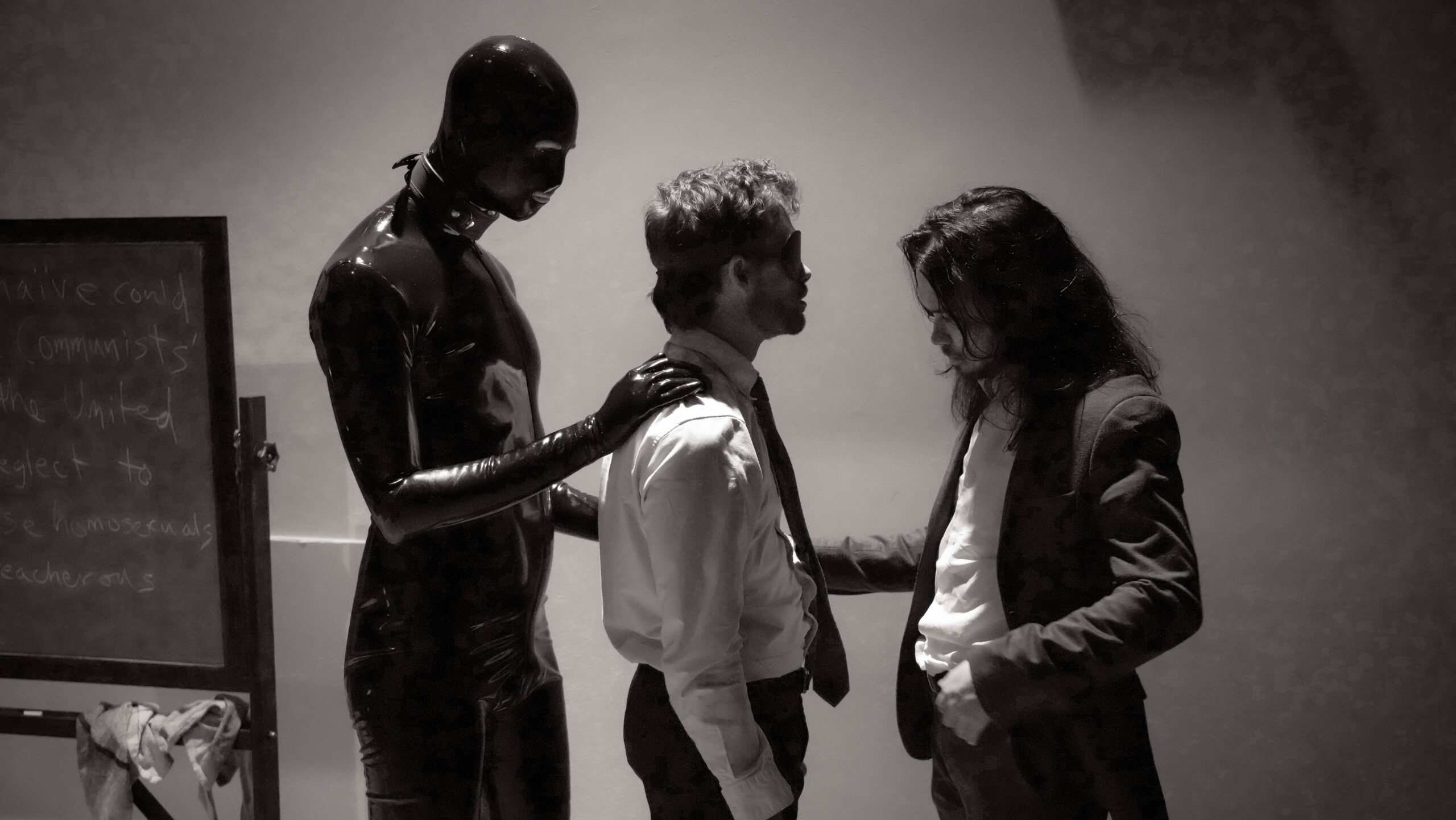
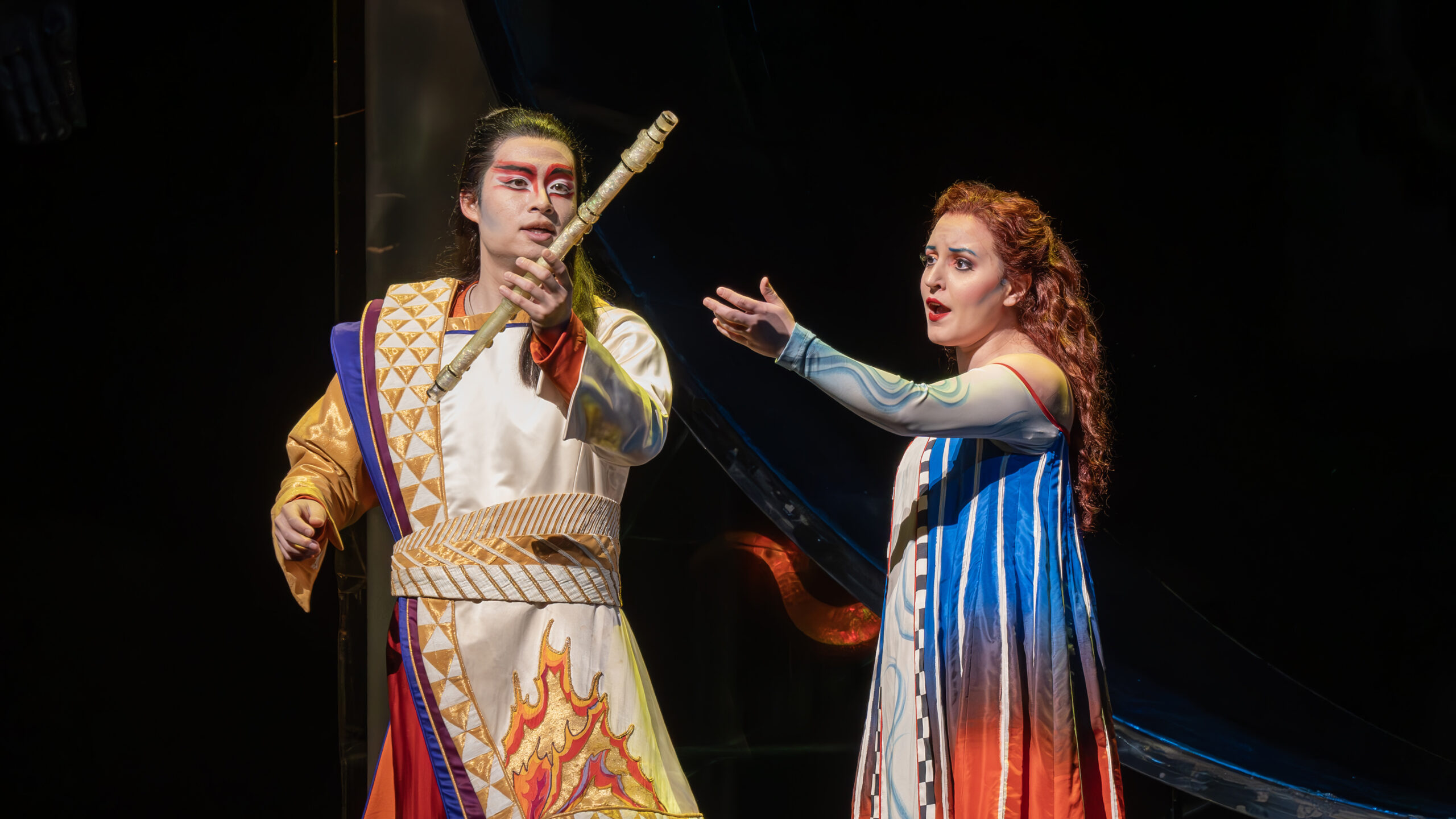
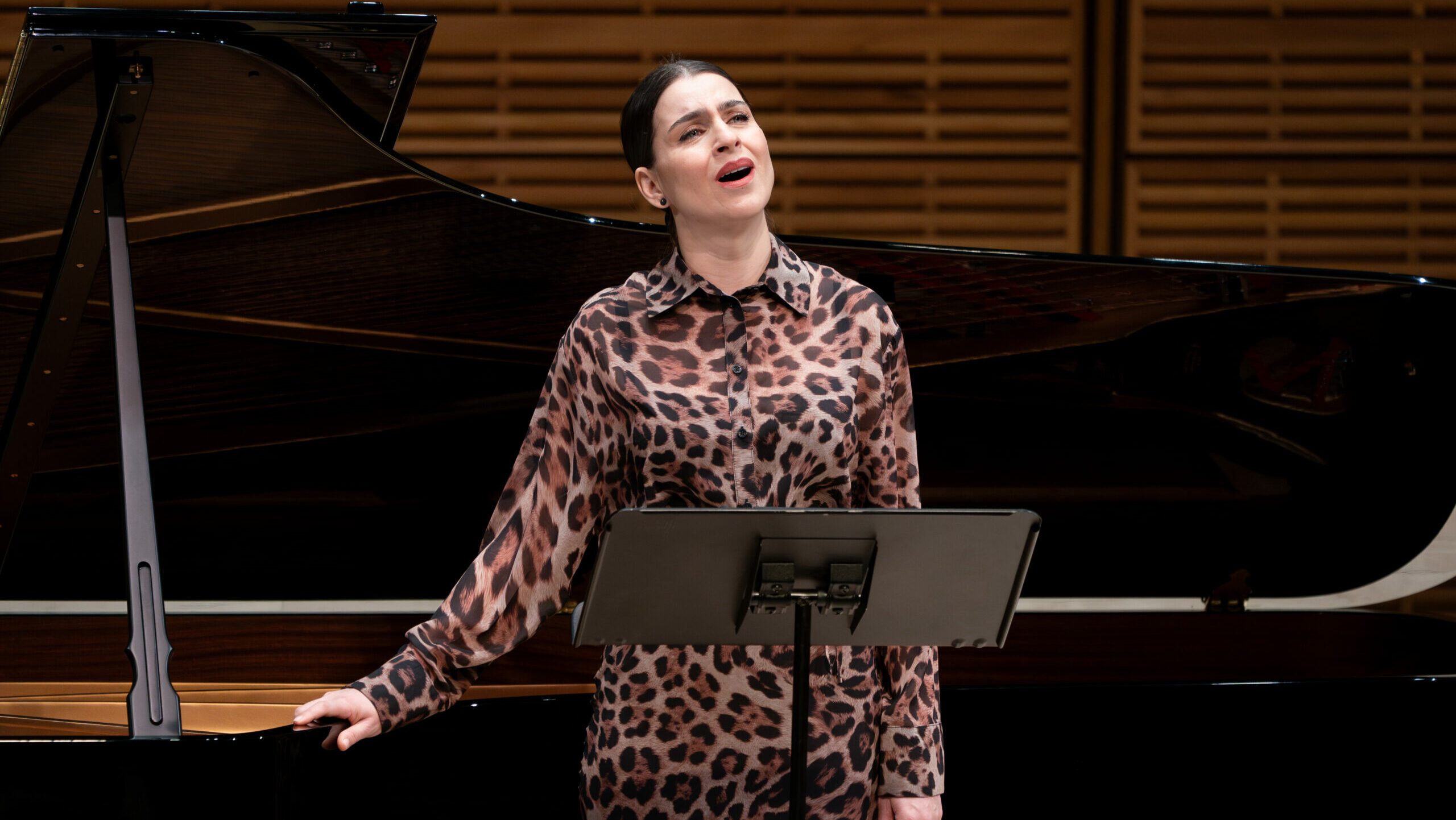











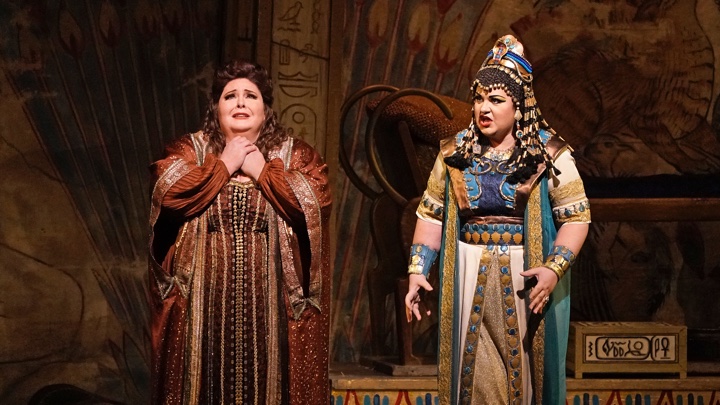
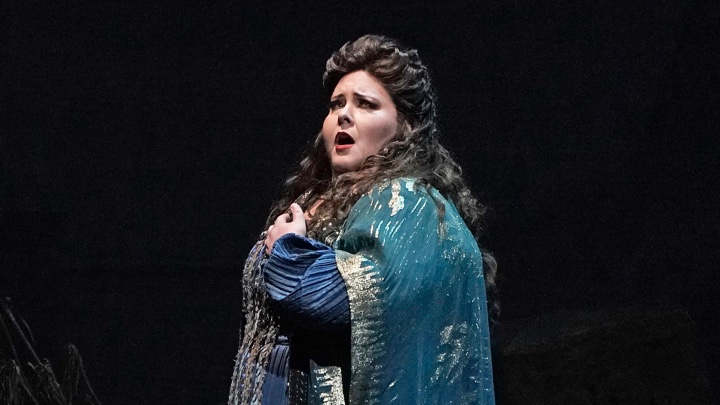
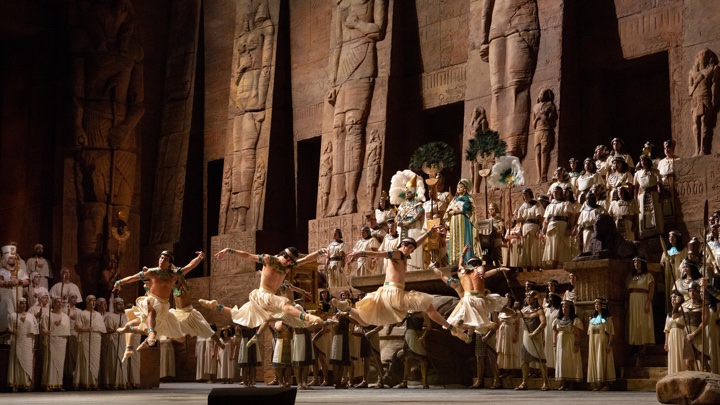

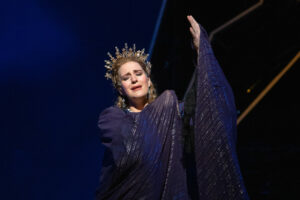
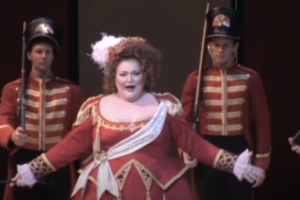



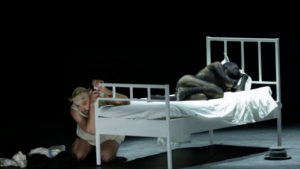
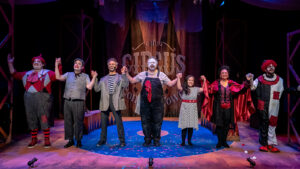



Comments